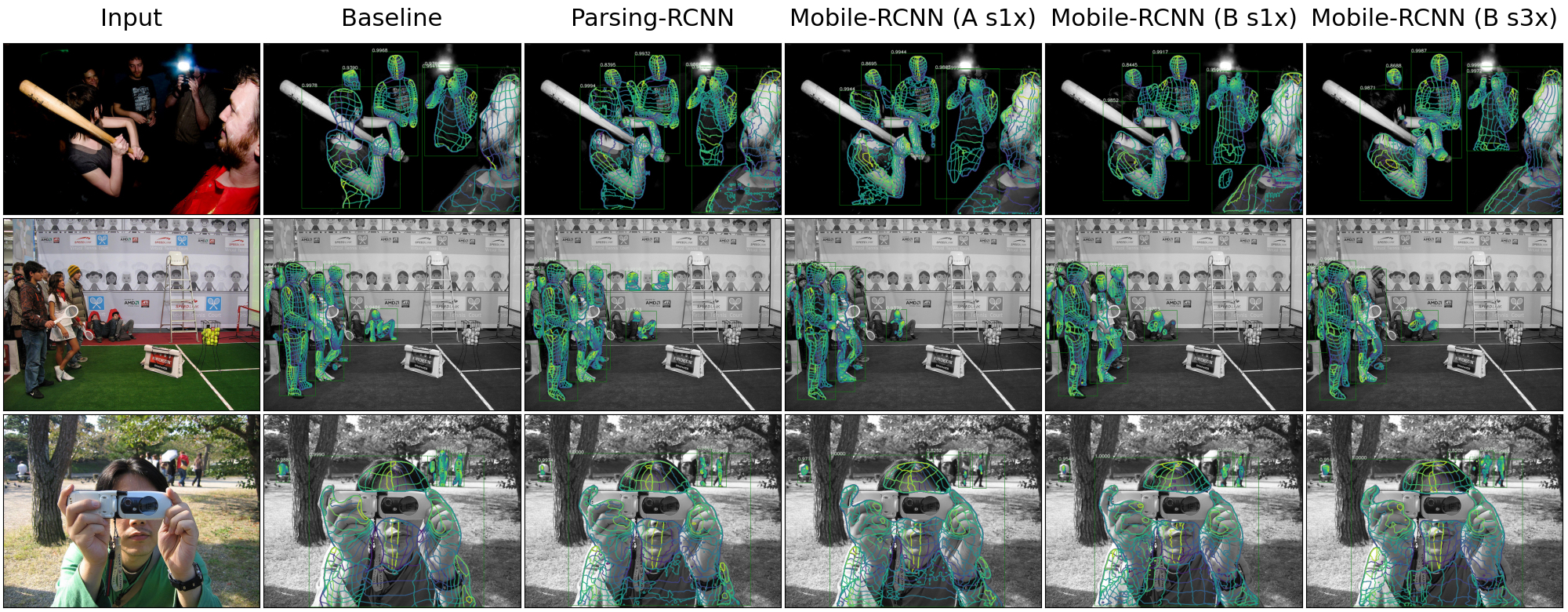Making DensePose Fast and Light
1Skolkovo Institute of Science and Technology2Huawei Moscow Research Center (Russia)3New York University
arXiv 2020

Qualitative comparison of different models. We depict contours with color-coded U and V coordinates as an output of the model.
Abstract
DensePose estimation task is a significant step forward for enhancing user experience computer vision applications ranging from augmented reality to cloth fitting. Existing neural network models capable of solving this task are heavily parameterized and a long way from being transferred to an embedded or mobile device. To enable Dense Pose inference on the end device with current models, one needs to support an expensive server-side infrastructure and have a stable internet connection. To make things worse, mobile and embedded devices do not always have a powerful GPU inside. In this work, we target the problem of redesigning the DensePose R-CNN model's architecture so that the final network retains most of its accuracy but becomes more light-weight and fast. To achieve that, we tested and incorporated many deep learning innovations from recent years, specifically performing an ablation study on 23 efficient backbone architectures, multiple two-stage detection pipeline modifications, and custom model quantization methods. As a result, we achieved 17 times model size reduction and 2 times latency improvement compared to the baseline model.Materials
Contact
If you have any questions about this work, please contact us under adase-3ddl@skoltech.ru.